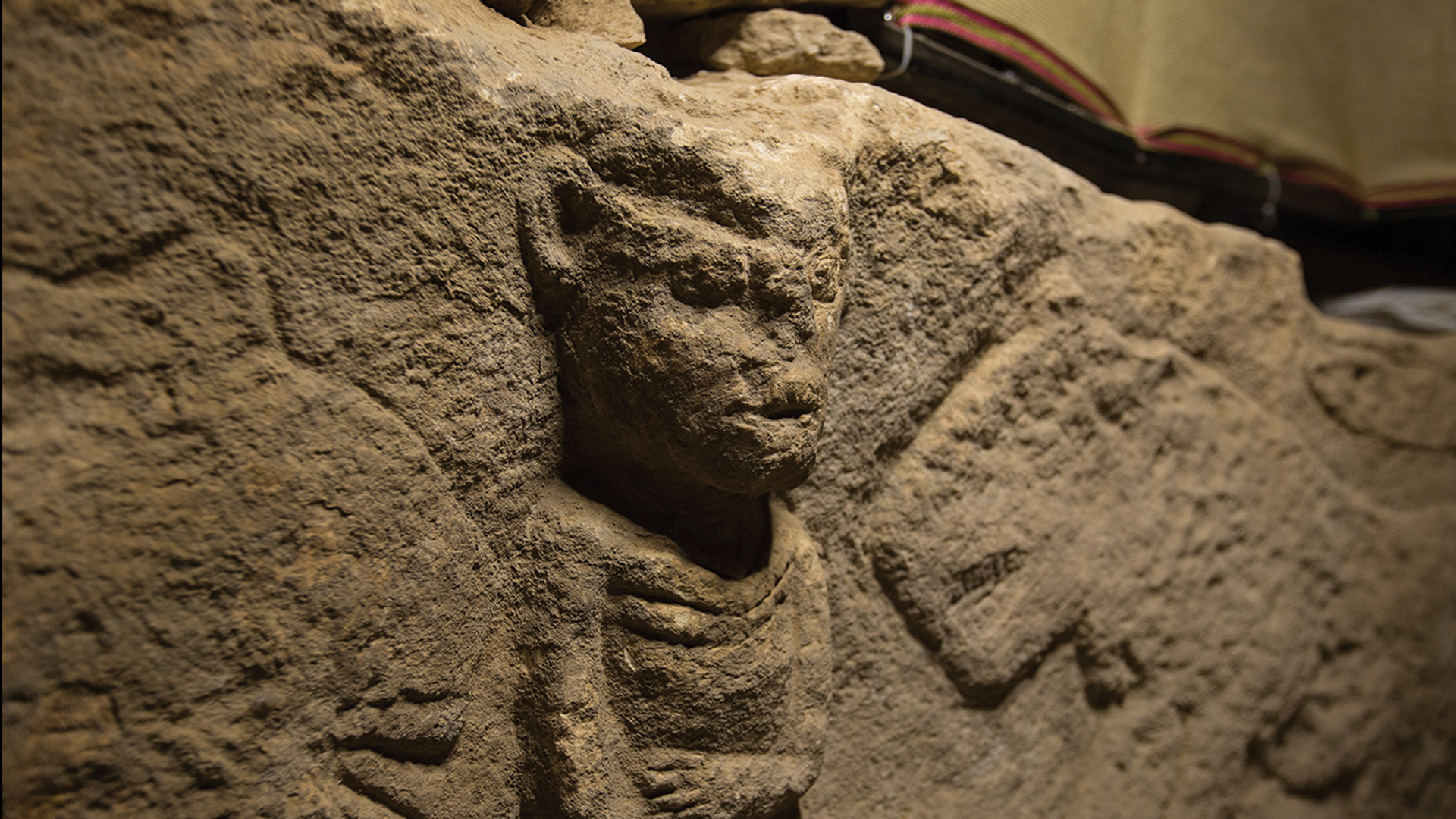https://sputnikglobe.com/20221212/first-narrative-in-human-history-discovered-in-turkey-and-it-contains-nudity-1105369367.html
'First Narrative' in Human History Discovered in Turkey... And It Contains Nudity
'First Narrative' in Human History Discovered in Turkey... And It Contains Nudity
Sputnik International
The ability to tell a story is the cornerstone of a civilized society... and an occasional flash of naked flesh can lend a bit of spice to even the most staid... 12.12.2022, Sputnik International
2022-12-12T15:24+0000
2022-12-12T15:24+0000
2022-12-12T15:24+0000
science & tech
discovery
archeology
turkiye
carving
narrative
https://cdn1.img.sputnikglobe.com/img/07e6/0c/0c/1105367945_0:19:1573:904_1920x0_80_0_0_3af3234bfa6d2f05cedb7661eb5a66c1.png
A study conducted by Eylem Özdoğan, an archaeologist at Istanbul University, suggests that two 11,000-year-old carvings discovered in Turkey are the oldest narrative ever.The first carving depicts a man holding his genitalia, while leopards flank him with bared teeth and long tails curled up toward the bodies. The second one shows a man standing opposite a bull with a large horn. The man has a "phallus-shaped extension on the abdomen" and his "raised, open left hand has six fingers, while the right holds a snake or rattle".Since both carvings feature a man next to a dangerous animal, it was considered that these depictions are related to one another.In an email to Live Science, Özdoğan explained that "in places such as Göbekli Tepe and Sayburç, there is a masculine world and its reflections — male predatory animals, phalluses, and male depictions. The ones at Sayburç are different in that they are depicted together to form a scene."The carvings were found in south-eastern Turkey at the site of Sayburç, a neolithic mound approximately 32km north of the Syrian border. The site itself is dated to the ninth millennium BC. In that period people were changing their style of life: moving from hunter-gatherers to farmers and living in long-term settlements.The excavations at the site began in 2021 and quickly revealed several residential buildings and the ruins of a communal one, which was nearly 11 meters in diameter. The latter was carved into the limestone bedrock with stone-built walls and benches that emerged straight from the floor. The artworks were found on the front of one of such benches.The excavation isn’t finished, so more fragments of this narrative may be found in future.
turkiye
Sputnik International
feedback@sputniknews.com
+74956456601
MIA „Rossiya Segodnya“
2022
News
en_EN
Sputnik International
feedback@sputniknews.com
+74956456601
MIA „Rossiya Segodnya“
Sputnik International
feedback@sputniknews.com
+74956456601
MIA „Rossiya Segodnya“
earliest barrative was discovered, earliest narrative nude, carvings in turkey, rock-cut reliefs in sayburç
earliest barrative was discovered, earliest narrative nude, carvings in turkey, rock-cut reliefs in sayburç
'First Narrative' in Human History Discovered in Turkey... And It Contains Nudity
The ability to tell a story is the cornerstone of a civilized society... and an occasional flash of naked flesh can lend a bit of spice to even the most staid or bewildering narrative.
A
study conducted by Eylem Özdoğan, an archaeologist at Istanbul University, suggests that two 11,000-year-old carvings discovered in Turkey are the oldest narrative ever.
The first carving depicts a man holding his genitalia, while leopards flank him with bared teeth and long tails curled up toward the bodies. The second one shows a man standing opposite a bull with a large horn. The man has a "phallus-shaped extension on the abdomen" and his "raised, open left hand has six fingers, while the right holds a snake or rattle".
Since both carvings feature a man next to a dangerous animal, it was considered that these depictions are related to one another.
In an email to Live Science, Özdoğan explained that "in places such as Göbekli Tepe and Sayburç, there is a masculine world and its reflections — male predatory animals, phalluses, and male depictions. The ones at Sayburç are different in that they are depicted together to form a scene."
The carvings were found in south-eastern Turkey at the site of Sayburç, a neolithic mound approximately 32km north of the Syrian border. The site itself is dated to the ninth millennium BC. In that period people were changing their style of life: moving from hunter-gatherers to farmers and living in long-term settlements.
The excavations at the site began in 2021 and quickly revealed several residential buildings and the ruins of a communal one, which was nearly 11 meters in diameter. The latter was carved into the limestone bedrock with stone-built walls and benches that emerged straight from the floor. The artworks were found on the front of one of such benches.
"This building has all the characteristic features of the communal structures in the region. In this structure, as in similar ones, animal and human images were found. However, here the characteristic figures of the period coexist and form a scene," said Dr Özdoğan.
The excavation isn’t finished, so more fragments of this narrative may be found in future.

